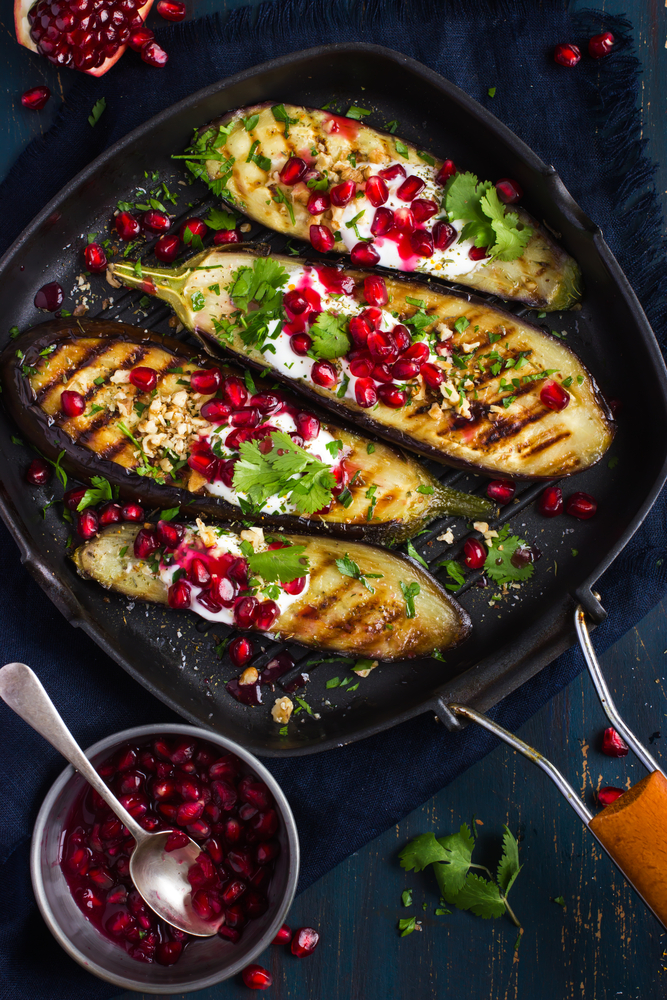Eggplant - pressing block 10x10 cm - grafted plant - strong quality!
Aubergine
Product information "Eggplant - pressing block 10x10 cm - grafted plant - strong quality!"
The eggplant (Solanum melongena) is a plant in the nightshade family. It is native to Burma and was imported to Europe via Spain in the middle of the 15th century. The fruit has a shiny dark purple skin and almost white flesh.
CULTIVATION TIPS:
You will have the best chance of success in growing eggplant if you use a greenhouse. Below 20°, the plant stops growing and simply stops growing. If you still want to grow them outdoors in the open ground, then look for the warmest and sunniest spot in the garden. Removing the thorns from eggplants is a mix of the pruning done with peppers and the thinning done with tomatoes. Like peppers, eggplants grow on a single stem until, at some point, the first flower appears. This is about after six leaves. When the first flower is visible, many side shoots can already be seen on the main stem. As with peppers, they must be removed. Pay close attention to where the flower is located, because the side shoot just below the flower is not removed! We use this shoot as the first extra stem. Possibly you can remove the first flower from the plant to give the plant some extra growth. In this way you can later have a larger harvest and a stronger plant. Later you will often keep a third side shoot, this is the next one that comes on the main stem. If you want fewer problems with the plant's vigor, or if you still have enough plants, then two stems per plant is also a good choice. Tying in aurbergine is not so urgent, because the stem is, unlike tomato, firm and woody. When it is clear which stems will eventually remain you can support them with a rope that you hang in the roof of the greenhouse. Eggplant can also be easily supported with a long bamboo stick. New side shoots will continue to appear. Until the first four flowers bloom, they are removed completely. The side shoots that appear later are headed at one or two leaves. It is not uncommon for these side shoots to grow almost to full size, in which case even topping is not necessary. The eggplant is a self-pollinator. In the greenhouse it is best, ye lacking sufficient insects, to regularly tap the stem of the plant with a stick to loosen the pollen. Eggplant likes a very nutritious soil. So work enough oragnetic material into the soil before planting. Also sprinkle a small amount of fertilizer (see package for dosage). During cultivation, when the fruits begin to grow, it is ideal to dissolve some fertilizer, take a potassium-rich fertilizer, in the watering each time.
CULINARY:
The slightly bitter to neutral taste makes the eggplant ideal for combining with many ingredients.To minimize any bitterness, you can sprinkle the sliced vegetable with salt and let rest for an hour, then rinse under cold running water and pat dry. Caution: Never eat eggplants raw! The fruit contains solanine, which can cause gastrointestinal problems. By heating, the solanine content is sharply reduced to a safe limit.
HARVEST AND STORAGE:
Harvest eggplant unripe. Ripe fruits become wrinkly and no longer taste good. It's best to harvest them when they can be gently squeezed. Cut the eggplant off the plant with a sharp knife. A regular harvest ensures that the plant is not overloaded so that it can produce new fruit regularly.
Product specifications
| Application / use plant: | Unknown - n/a |
|---|---|
| Application / use plant - details: | Boiled or baked |
| Bloom Month: | May, June, July, August |
| Bloom color: | White, Lilac, Violet |
| Branches / bark: | Unknown - n/a |
| Dutch plant name: | Aubergine |
| English plant name: | Eggplant |
| Flower color - details: | White or violet |
| French plant name: | Aubergine |
| Frost hardiness - details: | Very bad (-1 till +4°c), usda zone 10 |
| Frost resistance: | Not winter hardy |
| Fruit: | Big fruit, Purple |
| Fruit - details: | Deep purple, 10-20 cm long, shiny |
| Full grown plant height: | 50-120 cm - depending on the variety |
| German plant name: | Aubergine |
| Growth habit : | Rising |
| Growth habit - details: | Ascending, asks for support |
| Humidity/Soil: | Normal soil |
| Latin plant family: | Solanaceae |
| Leaf / Foliage: | Green |
| Leaf / foliage - details: | Green |
| Location: | Full sun |
| Location - details: | Preferably full sun |
| Maturity: | August-september |
| Minimum growing height (in cm): | 100 |
| Plant characteristic: | Edible (fruit, leaf, flower), Toxic, Fruit-bearing, Fruit vegetables |
| Plant family: | Nightshade family |
| Pruning period: | October, November |
| Winter foliage: | Losing leaf |
| maximal growth height (in cm): | 100 |
| type of crop: | Vegetables |
| type of soil: | Normal soil, Peaty soil (acidic) |
| type of soil / ground - details: | Humus-rich soil |
Pictures of this plant
Reviews
Login




















